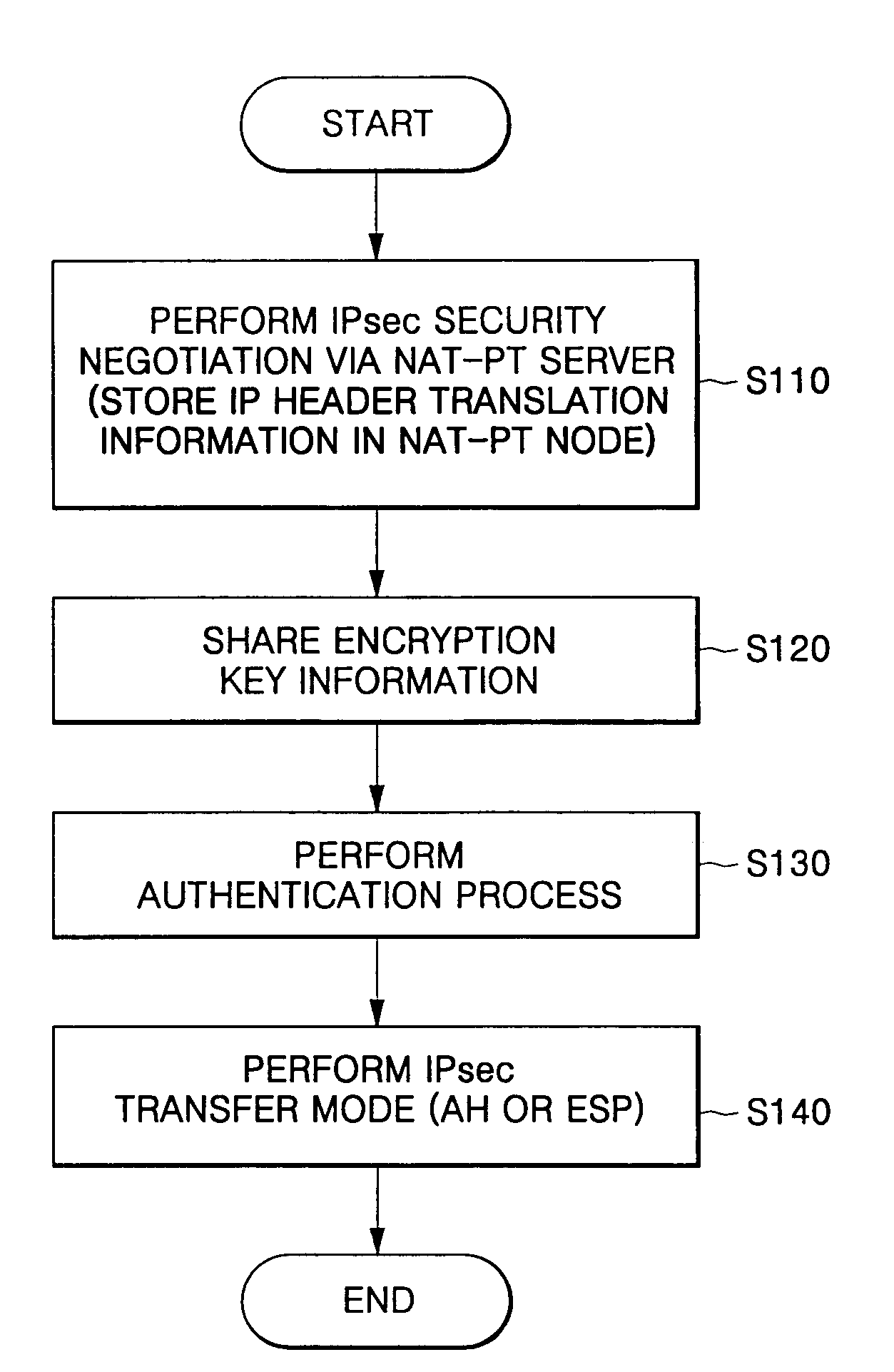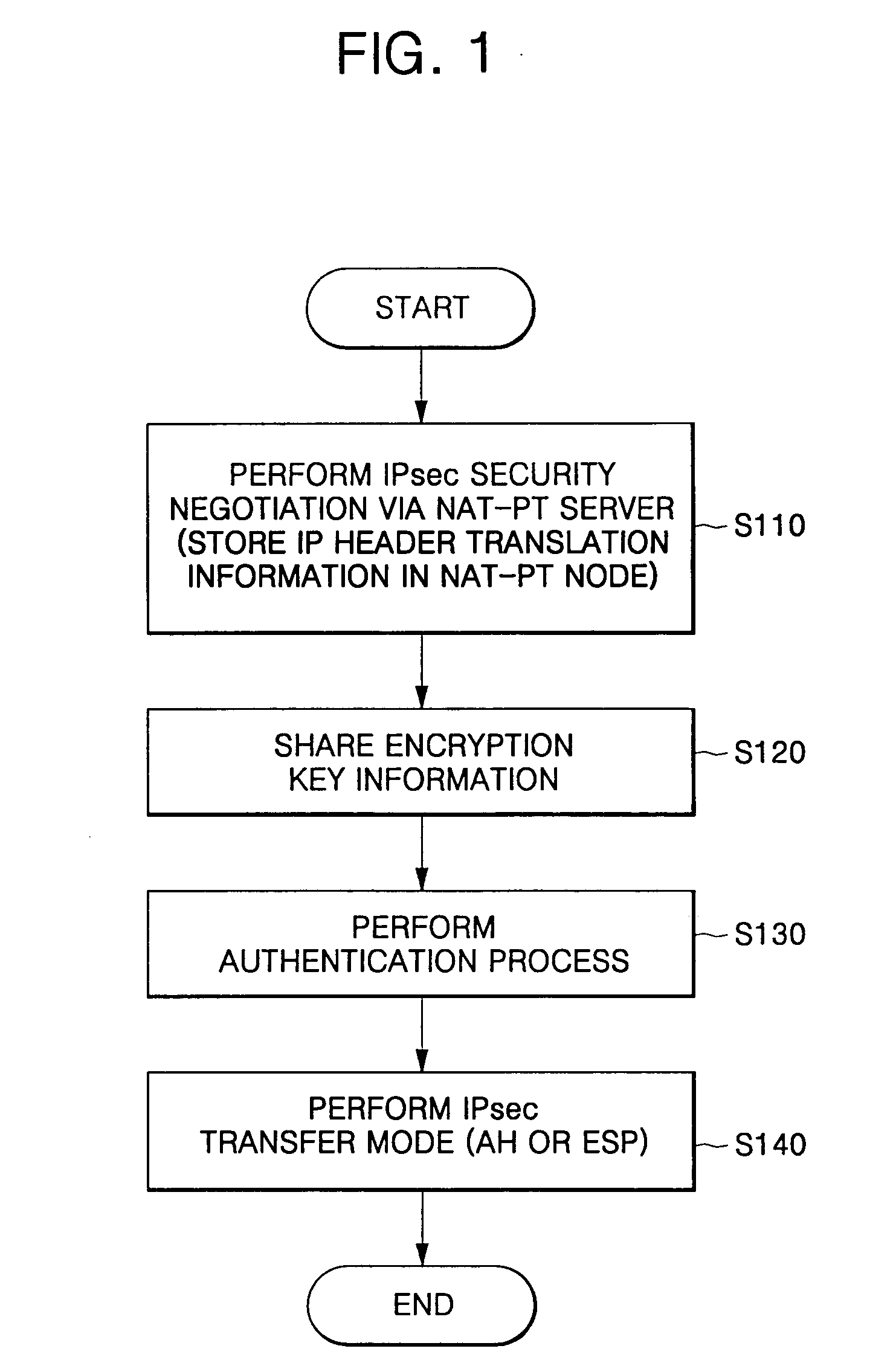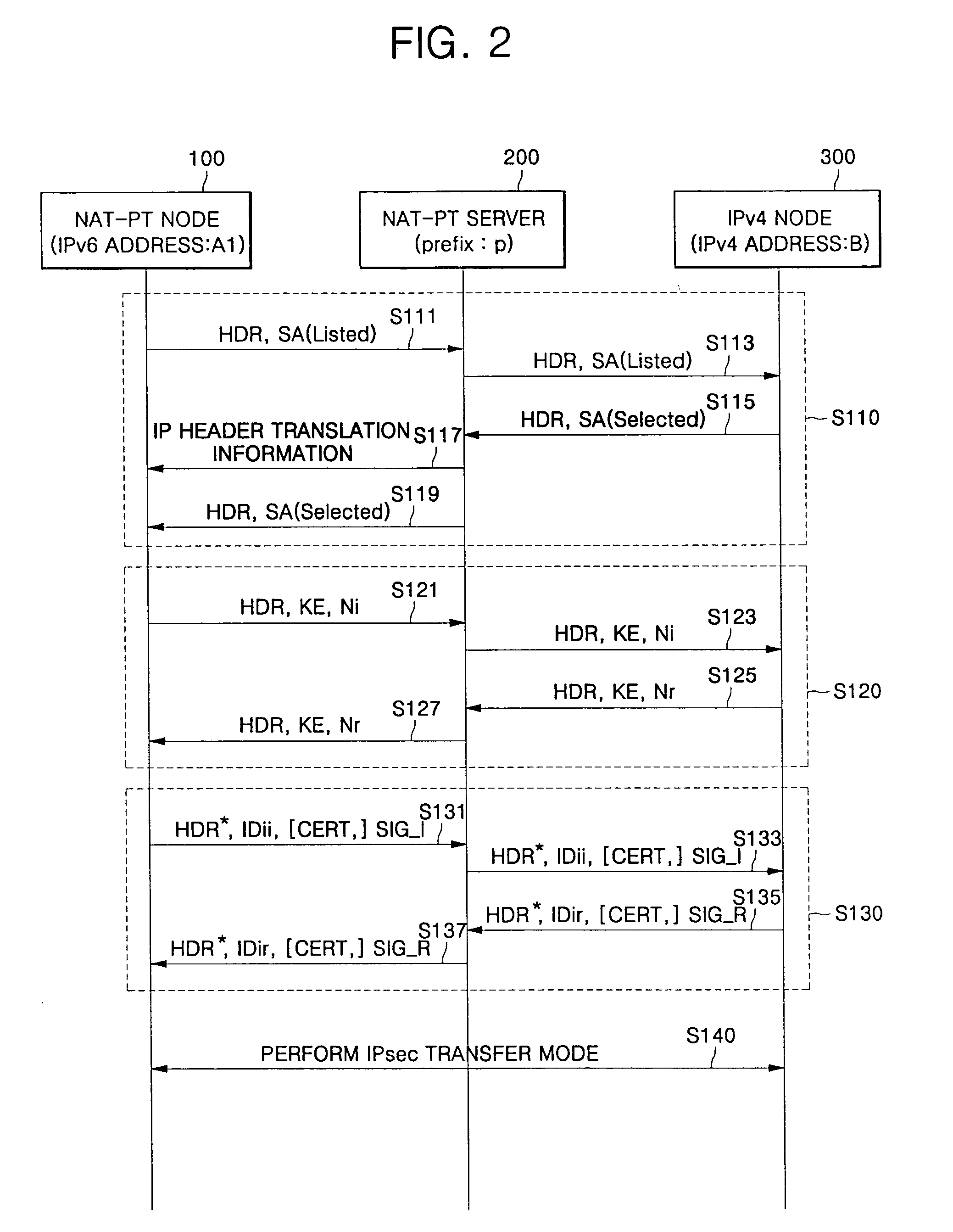Method for providing end-to-end security service in communication network using network address translation-protocol translation
a technology of network address translation and end-to-end security service, applied in the field of providing end-to-end security service in an ipv6 network, can solve the problems of inefficiency of ip packet routing processing, shortening of usable ip addresses, and complex various setting processes required for the operation of ip nodes
- Summary
- Abstract
- Description
- Claims
- Application Information
AI Technical Summary
Benefits of technology
Problems solved by technology
Method used
Image
Examples
Embodiment Construction
[0039] Hereinafter, an exemplary embodiment of the present invention will be described in more detail with reference to the accompanying drawings. It should be noted that, in the drawings, the same or similar components are designated by similar reference numerals or symbols even though represented in plural drawings. Further, in describing the invention, if it is determined that the detailed description of known functions or configurations makes the gist of the invention unnecessarily ambiguous, the detailed description will be omitted.
[0040]FIG. 1 is a processing flow chart of a method for providing end-to-end security service according to one embodiment of the present invention. Specifically, FIG. 1 is a processing flow chart of a method for providing end-to-end security service using IPsec in an IPv6 (Internet Protocol version 6) network having an Network Address Translation-Protocol Translation (NAT-PT) function. Here, the term ‘end-to-end security service’ refers to a service...
PUM
 Login to View More
Login to View More Abstract
Description
Claims
Application Information
 Login to View More
Login to View More - R&D
- Intellectual Property
- Life Sciences
- Materials
- Tech Scout
- Unparalleled Data Quality
- Higher Quality Content
- 60% Fewer Hallucinations
Browse by: Latest US Patents, China's latest patents, Technical Efficacy Thesaurus, Application Domain, Technology Topic, Popular Technical Reports.
© 2025 PatSnap. All rights reserved.Legal|Privacy policy|Modern Slavery Act Transparency Statement|Sitemap|About US| Contact US: help@patsnap.com



